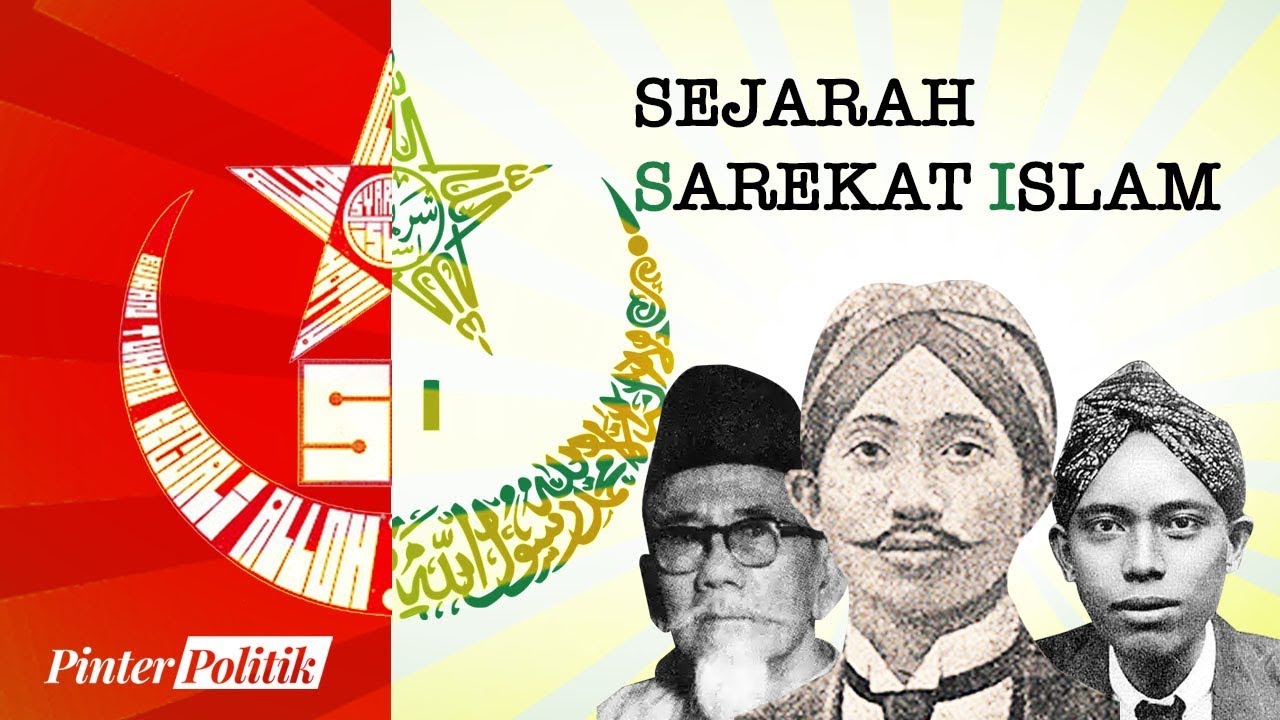Materi Sejarah Indonesia Masa Pergerakan Nasional (1908 - 1942)
Summary
TLDRThe video discusses the history of the *Syarekat Islam* (SI), a pivotal organization in Indonesia's independence movement. Originally founded in 1911 as *Syarekat Dagang Islam* (SDI) by Haji Samanudi, it later transformed under the leadership of HOS Cokroaminoto to become *Syarekat Islam*. The organization grew rapidly, focusing on economic, social, and religious goals, before evolving into a political entity. Internal divisions in 1921 led to a split into two factions: *SI Putih* and *SI Merah*. The video also compares radical and moderate strategies in the independence movement, emphasizing different methods of resistance against colonial rule.
Takeaways
- 😀 The Syarekat Islam (SI) was originally founded as Syarekat Dagang Islam (SDI) in 1911 by Haji Samanudi in Solo.
- 😀 The name change from SDI to Syarekat Islam occurred when the organization expanded its activities from trade to social, economic, and religious goals.
- 😀 The key objectives of Syarekat Islam included providing capital for trade, advancing the Islamic religion, and improving the economic welfare of the indigenous people.
- 😀 Syarekat Islam became a major threat to the colonial Dutch government due to its rapid growth and influence across Indonesia.
- 😀 In March 1916, Syarekat Islam was officially recognized as a political party by the colonial government.
- 😀 Internal divisions led to the decline of Syarekat Islam in 1921, resulting in the split into two factions: SI Puki and SI Merah.
- 😀 SI Merah, influenced by communism, was led by Semaun, while SI Puki was led by HOS Cokroaminoto.
- 😀 Both radical and moderate nationalist movements aimed for Indonesian independence, but their strategies differed significantly.
- 😀 Radical movements employed direct action and confrontation with the colonial government, while moderate movements favored negotiation and cooperation with the Dutch authorities.
- 😀 The moderate strategy sought to achieve economic independence first, followed by political freedom, using political frameworks like the Volksraad, while radicals sought immediate political independence through mass mobilization.
Q & A
What was the original name of the Syarikat Islam organization before it became known as Syarikat Islam?
-The original name of the organization was Syarikat Dagang Islam (Islamic Trade Union), abbreviated as SDI.
Who were the founders of Syarikat Dagang Islam, and where was it founded?
-Syarikat Dagang Islam was founded by Haji Samanudi in Solo in 1911.
Why did Syarikat Dagang Islam change its name to Syarikat Islam?
-The name was changed to Syarikat Islam to expand the organization's activities beyond trade to include broader social, economic, and religious objectives.
How did Syarikat Islam's leadership change over time?
-After Syarikat Dagang Islam moved to Surabaya, its leadership shifted to Haji Cokroaminoto, under whom the organization expanded and became more politically oriented.
What were some of the key goals of the Syarikat Islam organization?
-Syarikat Islam's goals included providing financial support to its members, promoting the economy, advancing Islamic teachings, and challenging the colonial government.
When was Syarikat Islam officially recognized by the Dutch colonial government?
-Syarikat Islam was officially recognized by the Dutch colonial government in March 1916.
What led to the decline of Syarikat Islam in 1921?
-The decline of Syarikat Islam in 1921 was due to internal divisions within the organization, leading to its split into two factions: SI Puki and SI Merah.
What were the two factions that emerged from the split in Syarikat Islam?
-The two factions were SI Puki, which followed a more moderate approach, and SI Merah, which leaned toward a more radical stance influenced by communist ideas.
What were the similarities between radical and moderate strategies in the independence movement?
-Both strategies shared the goal of achieving Indonesia's independence, recognized the importance of organized struggle, focused on national, not regional, goals, and emphasized the advancement of the people in politics, economics, and social culture.
How did the radical and moderate movements differ in their approach to the Dutch colonial government?
-The radical movement opposed cooperation with the Dutch government and aimed for immediate political independence through direct confrontation, while the moderate movement was willing to collaborate with the Dutch to achieve economic independence first, followed by political independence.
Outlines

This section is available to paid users only. Please upgrade to access this part.
Upgrade NowMindmap

This section is available to paid users only. Please upgrade to access this part.
Upgrade NowKeywords

This section is available to paid users only. Please upgrade to access this part.
Upgrade NowHighlights

This section is available to paid users only. Please upgrade to access this part.
Upgrade NowTranscripts

This section is available to paid users only. Please upgrade to access this part.
Upgrade Now5.0 / 5 (0 votes)





